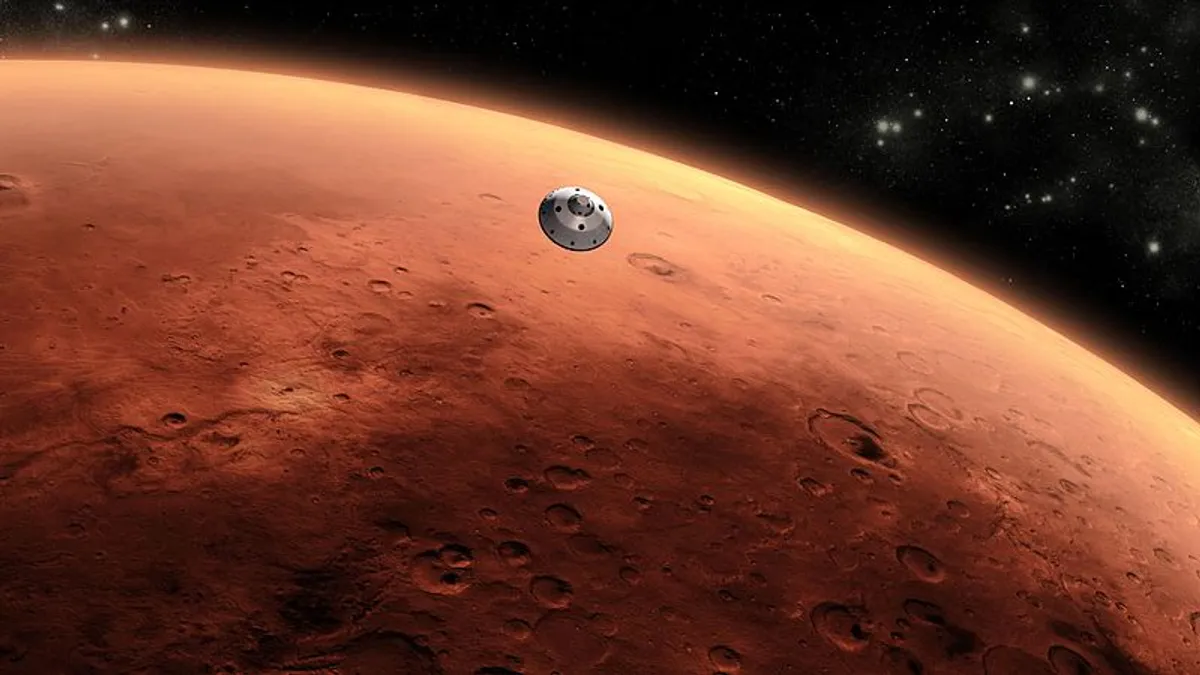Dive Brief:
- Researchers at NASA’s Langley Research Center in Hampton, VA, have designed a concept living structure to protect Mars astronauts from the Red Planet’s harsh climate and atmosphere.
- The central, donut-shaped living torus is surrounded by an outer shell of solid ice intended to provide both thermal insulation and shielding from radiation.
- Lightweight construction materials can be assembled by robots into astronaut-ready living quarters and would provide multiyear protection against ultraviolet radiation, charged-particle radiation, atomic oxygen, perchlorates and dust storms.
Dive Insight:
Elon Musk said he aims to help build a base on Mars, and the AEC set (along with NASA, for now) is ready to help get him there, or at least provide him and other astronauts with suitable digs once they arrive. In NASA's analysis of possible Mars habitation models, researchers noted that, while underground structures would offer the greatest resilience to planetary environmental conditions, the excavation equipment necessary to dig structures out was not feasible from a cost logistics standpoint.
With the discovery of vast deposits of frozen water on Mars, ice has emerged as a suitable primary building material for habitation structures. In addition to the Langley team’s torus concept, NASA awarded $30,000 to a design team in 2015 who conceptualized a Mars habitat created with 3-D-printed ice. Researchers have also developed formulations for producing concrete on Mars by mixing surface soils with molten sulfur.
Regardless of the ultimate design or materials bill, it’s likely robots, and not humans, will be the first contractors on Mars. The Langley team envisions an astronaut-ready habitation constructed by robots in advance of a manned landing, and NASA has also awarded $500,000 to companies developing robots for extra-planetary construction.











